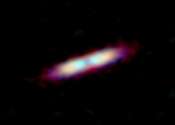First-time direct proof of chemical reactions in particulates
Researchers at the Paul Scherrer Institute PSI have developed a new method to analyse particulate matter more precisely than ever before. Using it, they disproved an established doctrine: that molecules in aerosols undergo ...









